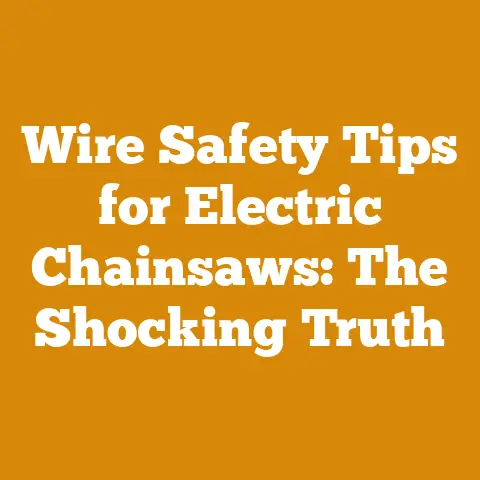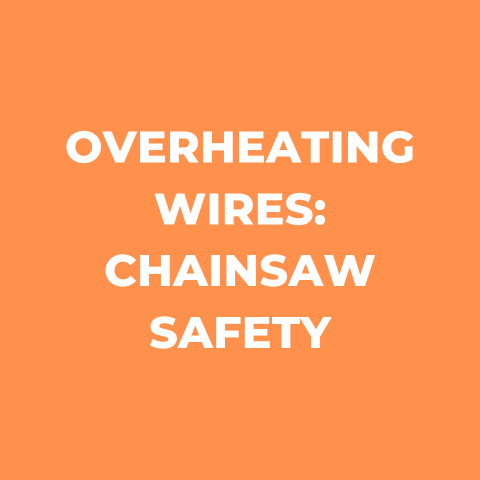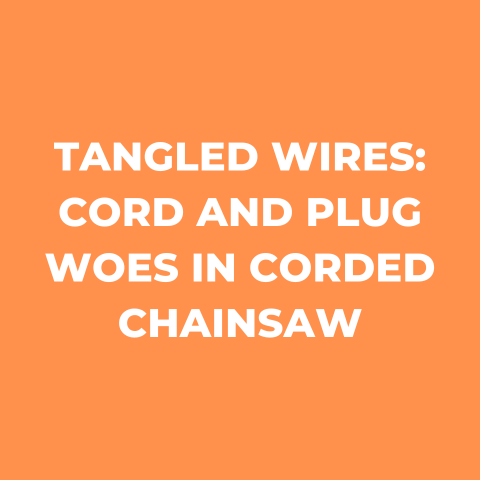Electrical Problems in Chainsaws: Silent Saboteurs (Explained)
Operating a chainsaw requires skill, focus, and responsible handling.
However, even the most seasoned operator can experience frustrating power loss issues that bring work to a grinding halt.
For electric chainsaws, electrical problems are often the culprit behind sudden loss of power during operation.
Unlike issues with gas-powered chainsaws, electrical problems can be subtle and difficult to diagnose without a trained eye.
Without proper troubleshooting, these “silent saboteurs” can lead to delayed projects, safety risks, and costly repairs down the line.
Equipping yourself with the knowledge to identify issues early and apply correct solutions independently will keep your equipment running smoothly.
Common Electrical Issues Causing Power Loss
Several different electrical issues can lead to your electric chainsaw losing power unexpectedly, including:
- Faulty switch or trigger contacts
- Loose, corroded, or faulty wiring connections
- Defective brushes or brush springs
- Weak or faulty motor
- Faulty capacitor
- Defective power cord
- Tripped thermal protectors
- Blown fuse
- Faulty outlet or insufficient amperage
The specific steps to isolate and address these issues are detailed in the following sections.
Step-by-Step Diagnosis and Repair
When your electric chainsaw suddenly loses power, methodically work through these steps to identify the cause:
1. Check power supply and connections
Start troubleshooting at the source of power.
- Plug the chainsaw into a known good outlet, preferably a dedicated 20A circuit.
Avoid outlets with other devices plugged into them. - Examine the chainsaw’s power cord for cuts, exposed wiring, or loose plug connections.
Replace cord if damaged. - Check that the plug is fully inserted into outlet, fits snugly, and does not feel hot.
- Reset any tripped circuit breakers or GFCIs supplying power to the outlet.
If the issue persists, continue to the next steps.
2. Check brushes and connections
Most electric chainsaw motors use carbon brushes to transmit power.
These commonly wear out over time and need replacement.
- Remove brush caps and inspect brushes.
Look for excessive wear, chipping/breakage, or length less than 1/4 inch. - Check that brushes move freely in their holders without binding.
- Inspect the brush springs. Replace if stretched or fatigued.
- Check that brush wires and connections are intact and not loose.
Tighten or repair as needed. - If brushes are excessively worn or damaged, replace as a matched pair.
3. Check trigger contacts and switch
The trigger switch activates the chainsaw’s power and can suffer from faulty contacts over time.
- Trigger the chainsaw switch and listen/feel for an audible “click” indicating proper engagement.
- With power disconnected, use a multimeter on continuity setting to test contacts.
Replace switch if faulty reading. - Ensure contacts are clean and corrosion-free. Use electrical contact cleaner if dirty.
- Check that switch wiring is intact with no visible damage.
4. Check capacitor
The capacitor helps start the chainsaw motor. Failure can prevent motor from turning over.
- Use a multimeter to test capacitance reading against stated microfarad (MFD) rating.
- Inspect for any bulging, leaks, or ruptures indicating failure.
- Check that capacitor wiring connections are secure.
- If readings are outside of specification or damage is found, replace the capacitor.
5. Check motor windings and armature
The motor itself can suffer from electrical failures causing power loss.
- Check resistance values of motor windings with a multimeter. Compare to manufacturer specifications.
- Inspect windings for signs of visible damage like chafing or burning.
- Test armature on growler for shorts. Replace if detected.
- If values are significantly outside specs or damage is found, motor replacement may be required.
6. Inspect wiring condition and connections
Faulty wiring and loose connections can break electrical continuity.
- Visually inspect wiring insulation for cracks, chafing, burns, or deterioration.
- Wiggle individual connections and cables while operating to check for shorts.
- Replace individual damaged wires/cables. Re-solder loose connections.
If the chainsaw operates correctly after individual wires are wiggled, suspect a loose connection.
Thoroughly inspect connection points and solder joints if applicable.
Loose wiring is often the cause of intermittent power loss in electric chainsaws.
7. Check fuse
The chainsaw’s electrical system is protected by a fuse that can blow and cut power.
- Locate fuse housing, remove fuse, and inspect closely using a continuity tester or multimeter.
- With fuse removed, tester should indicate open circuit. Closed circuit means blown fuse.
- If fuse is blown, replace with an identical new fuse with the proper amperage rating.
- Determine root cause of a repeatedly blowing fuse before returning chainsaw to service.
Preventing Electrical Problems
While electrical problems can sneak up without warning, incorporating preventative maintenance into your chainsaw use can minimize issues and keep you sawing.
- Regularly inspect wiring insulation for any cracking or deterioration.
Repair issues early before failure occurs. - Open up motor housing yearly and check brushes/springs for wear. Replace proactively if worn.
- Every 2-3 years, remove starter housing and inspect capacitor for bulging/leakage.
- After each use, inspect power cord and plug for any damage.
Replace cords at first sign of wear. - Clean chainsaw exterior and electrical connections periodically to prevent corrosion.
- Avoid excessive strain on cords/cables during operation that can cause chafing over time.
- Only use properly grounded electrical outlets with sufficient amperage rating.
- Use fuel stabilizer and run carbureted chainsaws dry before off-season storage.
When to Seek Repair Assistance
While this guide covers the most common electrical issues you may encounter, chainsaw repair can be dangerous if not performed properly.
Seek assistance from a certified repair technician if:
- You lack the tools, skills, or experience for diagnosis/repair
- The issue involves internal motor disassembly or rewinding
- The problem persists after all troubleshooting steps are followed
- There are signs of issues with other chainsaw systems
Seeking professional service annually or biannually can also help identify and address small problems before they become major.
For older or heavily used saws, the cost of a tune-up is money well spent for your safety and maintaining uptime.
Conclusion
Electric chainsaws offer convenience and utility when operating reliably.
However, power loss due to electrical problems can quickly dampen productivity.
An operator equipped with diagnostic knowledge and basic tools can effectively troubleshoot many issues independently.
Catching problems early also reduces safety risks and prevents more serious failures down the road.
Applying preventative maintenance diligently, inspecting systems routinely, and properly addressing electrical issues as they arise will keep your electric chainsaw running optimally for years to come.
Share this guide with fellow operators and make power-related troubleshooting second nature.
Here’s to many smooth cuts ahead!






